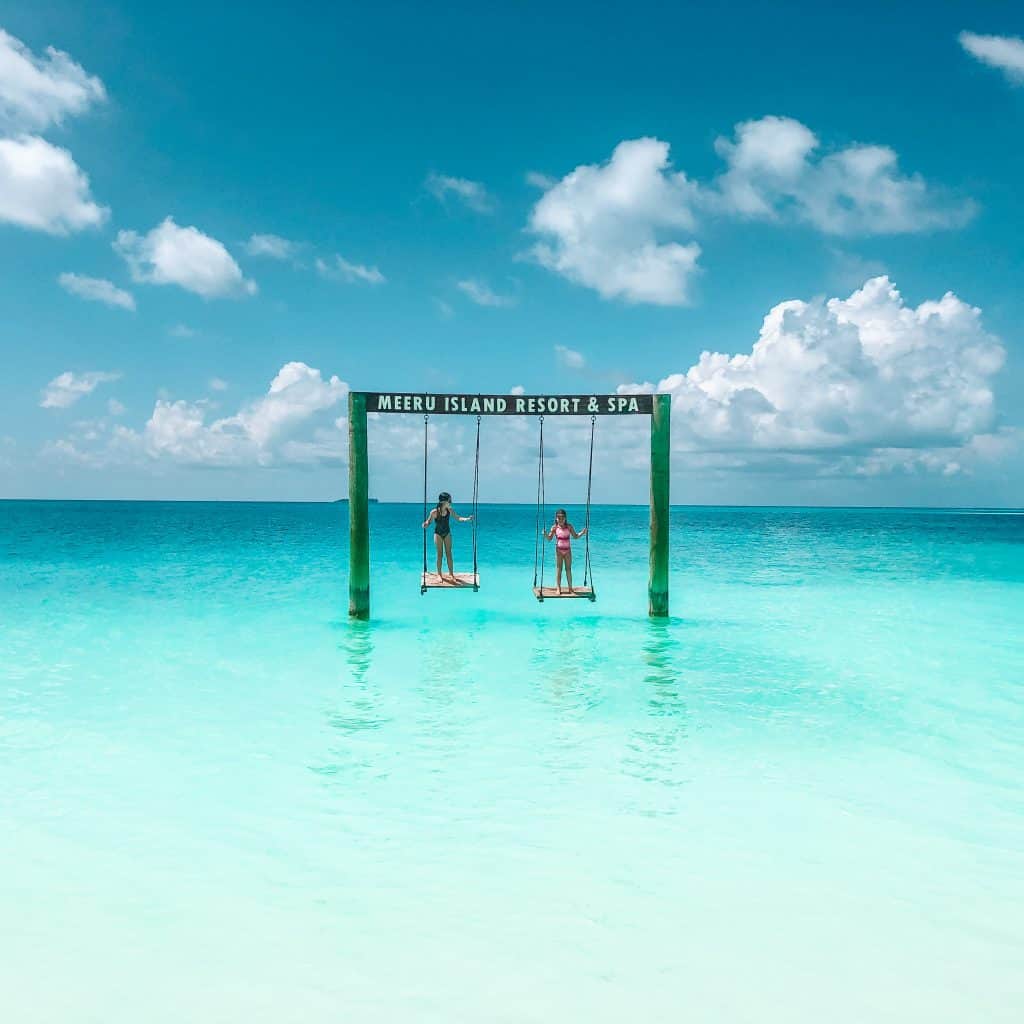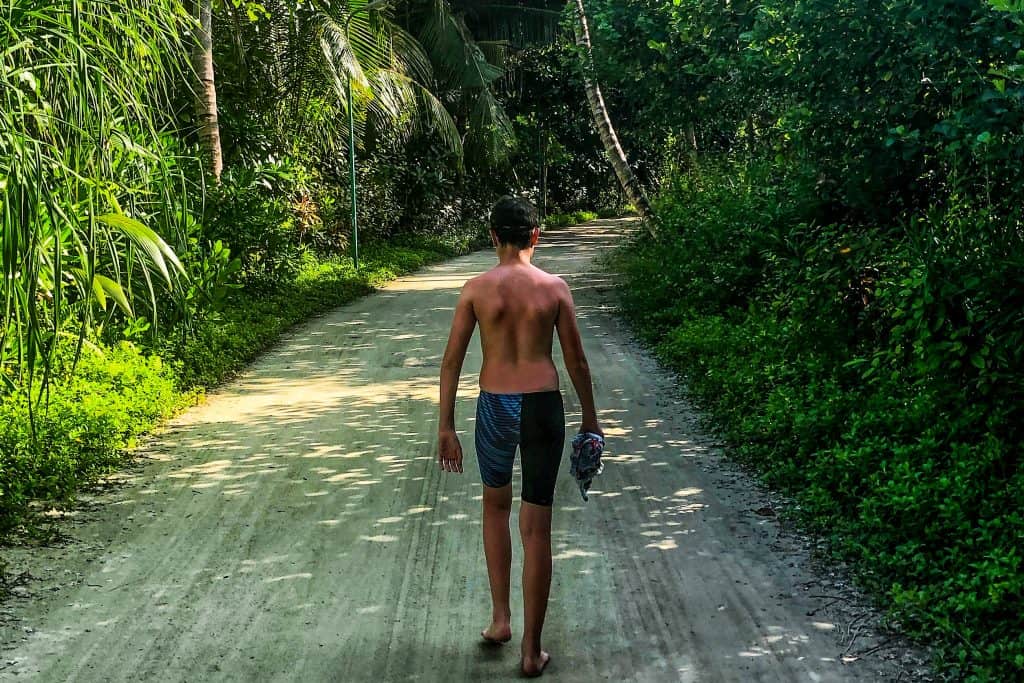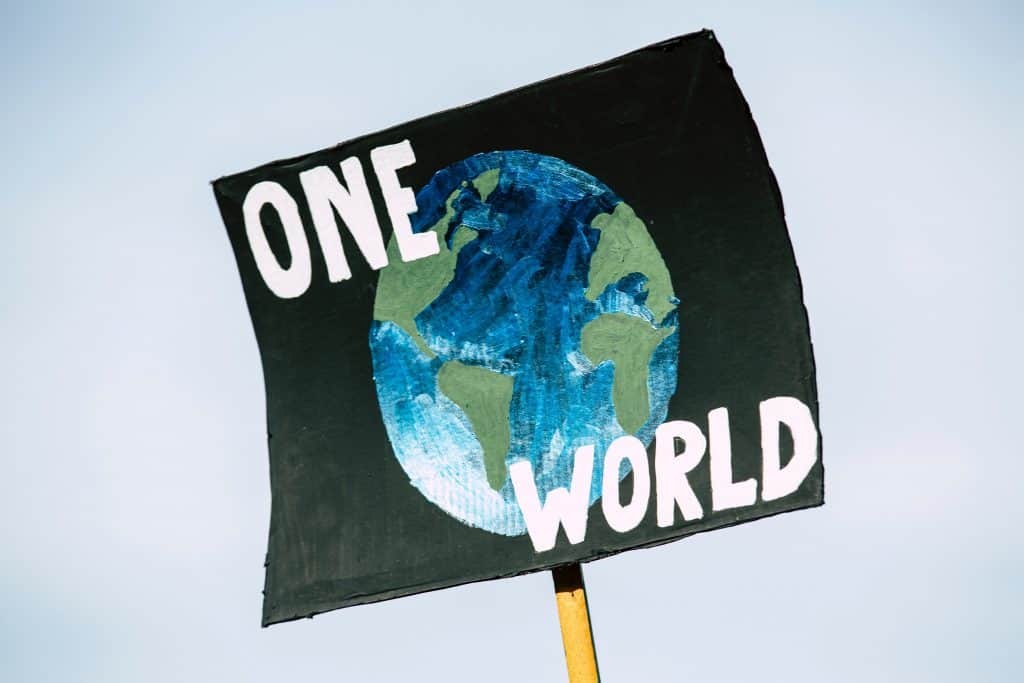Last updated on November 9th, 2024 at 08:13 am
The Maldives, with its reputation for luxury, may seem like an unlikely candidate for teaching your kids about the world. However, scratch the surface and you’ll find there’s plenty to learn about eco-tourism, wildlife and culture on a trip to the Maldives with kids.

Where is the Maldives?
The Maldives is a set of islands in the Indian Ocean. southwest of Sri Lanka and India. The Maldives is the smallest country in Asia.
With over 1,300 islands (200 of which are inhabited) and more than 150 resorts to choose from, it can be tricky picking the right one for your family. There are huge differences between resorts in terms of price, what’s on offer and who they’re geared towards.
If large resorts aren’t your thing, there are other options available to you, despite the Maldives’ reputation for luxury. There are a number of fantastic local islands in the Maldives where you can stay.
Male is the capital. It’s pretty small and very overpopulated so most visitors, once they land, move straight on to one of the islands geared more towards tourists. Tourism has been big business in the Maldives since 1972 with the country’s income before then predominantly coming from exporting fish.

Which Island in the Maldives with kids and what is there to do?
We chose Meeru Island Resort in the North Male Atoll. Measuring 1200 metres long by 350 metres wide, it’s one of the larger Maldivian islands and there’s plenty to do. It’s a family-friendly resort so is a perfect option for those in the Maldives with kids. There’s also a separate section for visitors without kids.
We flew with Etihad, with a stopover in Abu Dhabi. Emirates and Quatar Airways also fly to the Maldives, with British Airways flying directly if you’d prefer that option.
The Maldives is great for outdoor – and particularly water-based – activities. This is the place to try stand-up paddle boarding, kayaking or snorkelling. Meeru, surrounded by a lagoon and reefs, even offer an Introduction to Scuba diving course for children aged 8 and up.

Meeru gives visitors a taste of eco-tourism and self-sufficiency – it has its own (substantial) vegetable garden which provides the resort’s restaurants with ingredients for breakfast, lunch and dinner.
They have a coral rehabilitation programme in which guests can take part in planting coral in the resort’s coral garden. They’ve also worked hard to reduce the amount of single-use plastics on the island with glass bottles and paper straws used as alternatives.
Culture
Maldivian culture has Indian, Sri Lankan, Malaysian and Indonesian influences. Meeru has a small museum and hosts a cultural night once a week, offering an introduction to kids and adults alike about the history of the islands and their resourcefulness (making rope out of coconut husks and bags out of palm leaves, for example).
The Maldivians we met struck me as incredibly warm, friendly and welcoming; there was a politeness and humility that I felt my kids picked up on. Thinking about manners and being appreciative of what others do for them is, for me, one of the most important aspects of travelling for kids – and I felt that the Maldives was somewhere my kids could experience this.

Teaching kids about climate change
Over the past decade or so, there has been much said about the potential future of the Maldives as a result of climate change. For younger generations, the consequences, although bleak to think about, will be vital to acknowledge. If done sensitively, it’s never too early to start educating kids about it.
According to the Intergovernmental Panel on Climate Change (IPCC), by 2100, sea levels could have risen by 100cm and, if this is the case, the Maldives would be almost completely submerged.
Rising temperatures and poor waste management have killed much of the coral in the surrounding ocean. While there were many fish to see around our island, I was sad to see that much of the coral was a greyish-brown colour.
It is sad to think that while the Maldives have done little to contribute to the climate crisis, they will be one of the nations to experience the brunt of it. Effectively, it’s other more powerful nations who need to make the changes. I’m crossing all my fingers and toes that with a new administration in place in the U.S, this will be pushed to the top of the agenda.
For those who live in the west, it’s an important lesson in how our actions affect other countries and how some of the most beautiful locations on earth may no longer be habitable, let alone available to us to visit.
Countries such as the Netherlands have been trying to combat rising sea levels for years (through use of dykes and investment in infrastructure, for example).
However, it’s likely that the Maldives will need investment or charity from other countries in order to be able to do this.
Older kids will understand these facts. It’s likely that seeing the islands in person, meeting the people who live there and having an opportunity to think about how our actions can have that butterfly affect all those thousands of miles away, will have an impact.

For younger children, practical things often help make the message understood. Schools (some in particular) are starting to focus on environmental issues more but perhaps not as much as they could. While the impact of an individual’s actions may be small, if we act collectively we can make a difference.
Younger children are able to understand the importance of turning off lights to save electricity, and eating less meat. Schools can support children to write to the Government (something suggested by the Young People’s Trust for the Environment) asking for changes to be made.
So, the Maldives with kids is not just about pretty beaches and relaxation. Certainly, you can experience a lot of that … but there’s much more to it. There are so many opportunities for new experiences and to learn about both the history and the potential future of these beautiful islands – and how we might be able to help.
For more information about environmentally friendly travel, take a look at my article: How To Be A Conscious Traveller.
What to take with you on your trip to the Maldives with kids:
Antihistamine Allergy Relief Tablets
Rash vest Suncream (reef safe)
Further reading/ information:
How to talk to kids about climate change – Harriet Shugarman
Ten things I can do to help my world – Melanie Walsh
Climate Crisis for beginners – Andy Prentice et al
100 things to know about saving the planet – Various
Greta Thunberg (Little People, Big Dreams) – Maria Isabel Sanchez Vegara
Check out some new ideas for environmentally friendly and socially conscious gifts for kids here.






[…] how climate change is affecting some parts of the world more than others (see my article on What Kids Can Learn from a Trip to the Maldives) means they’re likely to take these issues more seriously as adults. They’ve seen for […]